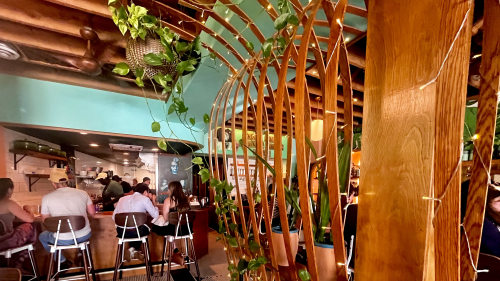While composting is most effective as a year-round endeavor, spring is as good a time as any to get started. Today, we’re breaking down — no pun intended — composting 101 in the 608.
Before starting your composting journey, be sure to look over the city’s composting ordinance.
What is composting?
Composting accelerates the natural breakdown of organic matter (food scraps included), producing a natural fertilizer that is nutrient-rich and beneficial for soil and plants.
The process creates an environment suitable for bacteria, fungi, worms, and other decomposers to work. Compost looks like fertile soil and is known as “black gold” to farmers.
First, you’ll need a bin
- DIY with wood pallets | While this is the most affordable option, it’s also the most accessible to our local critters like raccoons, cats, and foxes.
- Store-bought bin | Locally, you’ll be able to find these at Home Depot, Walmart’s Garden Center, or Ace Hardware.
- Store-bought tumbler | While tumblers make the turning process easier, they are prone to attracting unwanted insects and not being ideal for helpful worms to thrive.
Materials
The key to a good compost pile is to layer “brown” and “green” material. Pro tip: save the city’s Guide to Composting at Home to keep the basics on-hand.
Brown
- Fall leaves
- Straw/hay
- Wood chips
- Clean newsprint
- Clean + dry shredded cardboard
Green
- Flowers/yard plants
- Lawn clippings
- Eggshells
- Raw fruits + veggies
- Tea leaves/coffee grounds
Assembly
- At the bottom of your bin, lay down a small layer of soil topped with 4 inches of coarse brush + sticks.
- Lay down 4 inches of green material.
- Lay down 8 inches of brown material — add a bit of water to keep things damp.
- Add another small layer of soil.
- Repeat steps 2-4 until your bin is full.
- Turn the pile after ~1 month.
Your pile will be ready in ~3 months. For more detailed instructions, check out the city’s How-To video.
Local resources
Maybe you’re down for the cause, but don’t have the bandwidth to add another project to your to-do list. Or, your household doesn’t produce enough food waste to start a pile of your own.
No worries, check out these local composting companies that will do the composting for you:
- Curbside Composter | Your food waste will help provide rich soil for local farms.
- Green Box Compost | Get a bucket for your individual or single-family home, or talk to your landlord about getting a large bin that your whole building can use.
Additionally, residents are welcome to bring their food scraps to either of the city’s food scraps recycling sites:
Market Site 1 | South Madison Farmer’s Market |1602 S. Park St.
- Hours: 2-6 p.m.
- Dates open: During Tuesday markets from May 23-October 31
Market Site 2 | Eastside Farmer’s Market | 202 S. Ingersoll St.
- Hours: 4-7 p.m.
- Dates open: Only Tuesday evenings from April 25-October 31
While Madison does not have a citywide composting program, the above resources supplemented by the city’s composting + food scraps pages offer a plethora of information for residents who are looking to go green.












